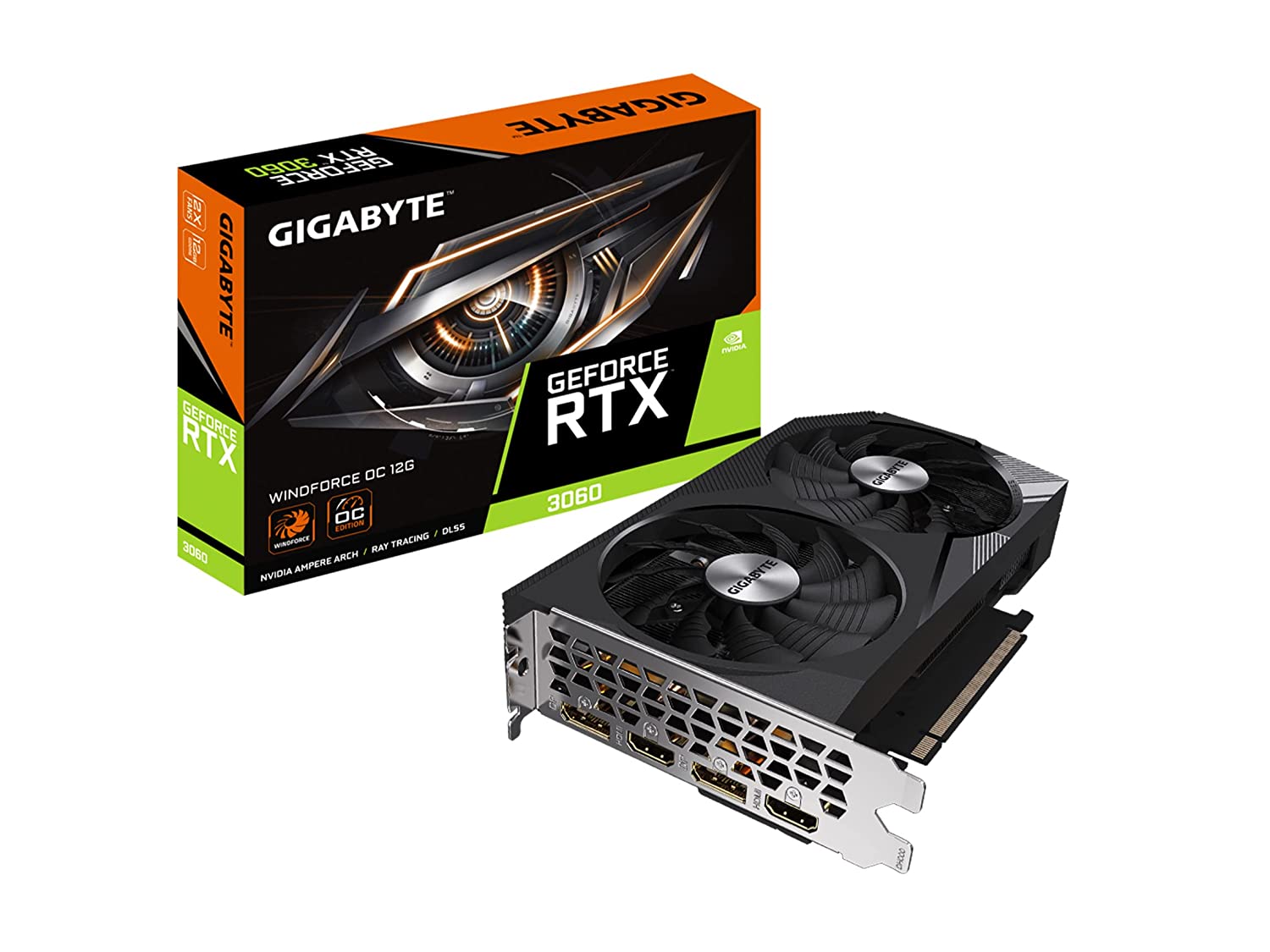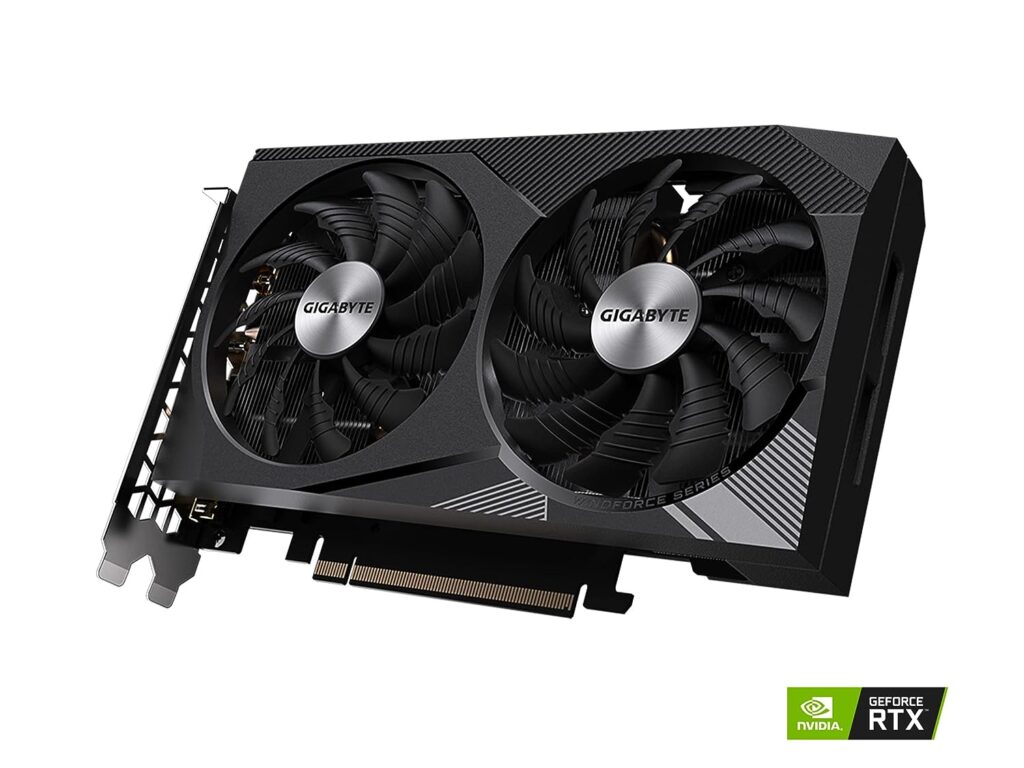Currently Empty: ₹0.00
Understanding Graphics Cards for Desktop Computers.

Introduction:
In the world of PC gaming and graphic-intensive tasks, one component reigns supreme: the graphics card. Often referred to as the GPU (Graphics Processing Unit), this powerful piece of hardware is the lifeline of visual performance in desktop computers. Understanding the importance and intricacies of graphics cards is crucial for anyone looking to build or upgrade their gaming rig or workstation. In this blog post, we’ll delve into the world of graphics cards, exploring their role, types, specifications, and how to choose the right one for your needs.

The Role of Graphics Cards:
In simple terms, a graphics card is responsible for rendering images, animations, and videos onto your computer screen. Whether you’re battling dragons in a fantasy realm, editing high-resolution videos, or designing 3D models, the graphics card handles the heavy lifting to ensure smooth and immersive visuals. Unlike the CPU (Central Processing Unit), which handles general-purpose computations, the GPU is optimized for parallel processing tasks, making it highly efficient for rendering graphics.
Types of Graphics Cards:
Graphics cards come in various shapes and sizes, catering to different needs and budgets. The two primary types are integrated and dedicated graphics cards:
Integrated Graphics: Integrated graphics are built directly into the computer’s motherboard or CPU. While they suffice for basic computing tasks like web browsing and office work, they lack the power required for demanding applications or gaming.
Dedicated Graphics: Dedicated graphics cards, on the other hand, are standalone components that plug into the motherboard via PCIe slots. These cards contain their own GPU, dedicated memory (VRAM), and cooling systems. They offer significantly higher performance compared to integrated graphics and are essential for gaming enthusiasts, content creators, and professionals requiring high visual fidelity and rendering capabilities.
Specifications to Consider:
When shopping for a graphics card, several specifications dictate its performance and suitability for specific tasks:
GPU Model: The GPU model determines the card’s architecture, features, and overall performance. Popular manufacturers include NVIDIA and AMD, with each offering a range of GPUs tailored to different needs and budgets.
VRAM (Video RAM): VRAM is dedicated memory on the graphics card used for storing textures, frame buffers, and other graphical data. More VRAM allows for higher resolution textures and better performance at higher resolutions.
Clock Speed: The clock speed, measured in MHz or GHz, determines how quickly the GPU can process instructions. Higher clock speeds generally result in better performance, but other factors like architecture and memory bandwidth also play crucial roles.
CUDA Cores (NVIDIA) / Stream Processors (AMD): These are the parallel processing units within the GPU that handle computations. More cores generally lead to better performance, especially in tasks like gaming and rendering.
Cooling System: Efficient cooling is essential to prevent overheating and maintain optimal performance. Graphics cards come with various cooling solutions, including fans, heatsinks, and liquid cooling systems.
Choosing the Right Graphics Card:
Selecting the perfect graphics card depends on your specific requirements, budget, and compatibility with other hardware components. Factors to consider include:
Use Case: Determine whether you primarily need the graphics card for gaming, content creation, or professional applications like CAD (Computer-Aided Design) or video editing.
Budget: Graphics cards come in a wide price range, from budget-friendly options to high-end models costing several hundred or even thousand dollars. Set a budget that aligns with your needs and expectations.
Compatibility: Ensure compatibility with your motherboard, power supply unit (PSU), and other hardware components. Check PCIe slot availability, power connector requirements, and physical dimensions to avoid compatibility issues.
Performance Goals: Consider the resolution and graphics settings you intend to use. Higher resolutions and graphic details require more powerful GPUs with ample VRAM.
Some additional aspects of graphics cards:
Ray Tracing and AI Features: In recent years, graphics cards have seen significant advancements with the introduction of ray tracing and AI-powered features. Ray tracing, enabled by NVIDIA’s RTX technology and AMD’s RDNA2 architecture, simulates the behavior of light to create more realistic lighting, shadows, and reflections in games and applications. Meanwhile, AI features like NVIDIA DLSS (Deep Learning Super Sampling) use machine learning algorithms to upscale lower-resolution images, improving performance without sacrificing visual quality.
Connectivity and Ports: Graphics cards offer various display connectivity options, including HDMI, DisplayPort, and DVI. Consider the number and types of ports available on the card to ensure compatibility with your monitor or multi-monitor setup. Additionally, some high-end graphics cards support features like NVIDIA G-SYNC and AMD FreeSync for smoother gameplay by synchronizing the monitor’s refresh rate with the GPU’s frame rate.
Power Requirements: Graphics cards can be power-hungry components, requiring adequate power supply units (PSUs) to function optimally. Check the power requirements of the graphics card, including the recommended wattage and number of PCIe power connectors. Investing in a high-quality PSU with sufficient wattage and power delivery ensures stability and longevity for your system.
Form Factor and Cooling: Graphics cards come in various form factors, including standard full-length cards, compact ITX-sized cards, and specialized designs for small form factor (SFF) builds. Consider the physical dimensions of the graphics card and the available space in your PC case to ensure a proper fit. Additionally, evaluate the cooling solution employed by the graphics card, as efficient cooling is essential for maintaining optimal performance and longevity. Look for features like custom heatsinks, multiple fans, and advanced thermal management systems for effective heat dissipation.
Overclocking Potential: Enthusiasts and overclockers may be interested in the overclocking potential of graphics cards. Overclocking involves increasing the GPU and memory clock speeds beyond the manufacturer’s specifications to achieve higher performance. However, overclocking also increases power consumption and heat generation, so proper cooling and monitoring are essential. Some graphics cards come with factory overclocked settings or features like MSI Afterburner and ASUS GPU Tweak for easy overclocking and tweaking.
Conclusion: In conclusion, the graphics card remains a critical component for desktop computers, driving visual performance and enabling immersive gaming experiences, content creation, and professional applications. By considering factors like ray tracing capabilities, connectivity options, power requirements, form factor, and overclocking potential, you can make informed decisions when selecting the right graphics card for your specific needs and preferences. Whether you’re a casual

Yash
I read this blog
I found it is very informative 👍 .Please suggest me best graphic card.I’m waiting for reply
SharpEye Techno Solutions
Thanks for your compliment. We recommend NVIDIA 3060 Graphic Card for Gaming & Graphical Works Purpose.